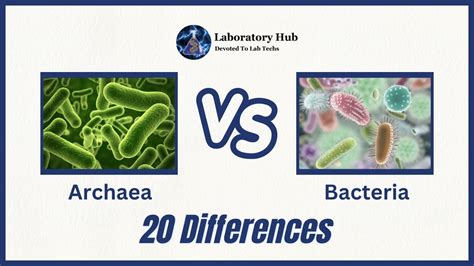The microbial world is vast and intricate, comprising a myriad of organisms that have evolved over billions of years to occupy almost every conceivable ecological niche on Earth. Among these microorganisms, two domains stand out for their profound impact on the planet’s ecosystems and their fascinating evolutionary history: Bacteria and Archaea. Despite often being lumped together under the general term “prokaryotes” due to their lack of a true nucleus and other membrane-bound organelles, Bacteria and Archaea exhibit a multitude of differences that underscore their unique biological properties and separate evolutionary paths.
Cellular Structure and Metabolism
One of the primary distinctions between Bacteria and Archaea lies in their cell wall composition. Bacterial cell walls are typically composed of peptidoglycan (also known as murein), a polymer that provides structural support and maintains the osmotic balance of the cell. In contrast, Archaea have cell walls made of pseudopeptidoglycan, polysaccharides, or even lack a cell wall altogether in some species, showcasing their adaptability to diverse environments. This difference in cell wall composition is critical for understanding the environmental niches these organisms can occupy and how they interact with their surroundings.
Metabolically, Bacteria and Archaea also exhibit significant diversity. While both domains include species capable of photosynthesis, fermentation, and respiration, the specific pathways and mechanisms can vary substantially. For instance, some Archaea are capable of methanogenesis, a process by which they produce methane as a byproduct of their metabolism, a trait not found in Bacteria. This ability underscores the unique role Archaea play in the global carbon cycle and highlights their importance in certain ecosystems, such as wetlands and the guts of ruminants.
Membrane Lipids
The composition of membrane lipids in Bacteria and Archaea represents another key area of differentiation. Bacterial membranes are primarily composed of ester-linked fatty acid chains, whereas Archaeal membranes are built from ether-linked isoprenoids. This fundamental difference in membrane chemistry influences the stability, fluidity, and overall function of the cell membrane, affecting how these organisms respond to temperature changes, salinity, and other environmental stressors. The ether lipids found in Archaea are particularly noteworthy for their ability to form monolayers, which can provide enhanced stability under extreme conditions, such as high temperatures and high salinity, explaining the prevalence of Archaea in such environments.
Genetic and Molecular Biology
Genetically, Bacteria and Archaea also display distinct characteristics. Their ribosomal RNA (rRNA) sequences, often used as a molecular clock to infer evolutionary relationships, are significantly different. These differences extend to other aspects of their genetic machinery, including the enzymes involved in DNA replication and repair, and even the structure of their genes and operons. For example, Archaea possess genes and metabolic pathways more closely related to those of eukaryotes than to Bacteria, suggesting a complex evolutionary history that may involve significant gene transfer events.
Ecological Roles
Despite their differences, both Bacteria and Archaea play vital roles in the Earth’s ecosystems. They are instrumental in decomposing organic matter, fixing nitrogen, and contributing to the geochemical cycles that shape our planet. In marine and terrestrial environments, they form the basis of food webs and are crucial for the health of plants and animals, including humans. The specificity of their ecological niches, however, can vary greatly between the two domains, reflecting their unique physiological and metabolic attributes.
Conclusion
In conclusion, the distinctions between Bacteria and Archaea are multifaceted and underscore the remarkable diversity of microbial life. From their cell wall compositions and metabolic pathways to their genetic structures and ecological roles, these differences not only highlight the unique adaptations of each domain but also contribute to our understanding of the evolution of life on Earth. As research continues to unveil the intricacies of microbial biology, it becomes increasingly clear that Bacteria and Archaea, while related, represent distinct biological entities that have evolved to thrive in a wide range of environments, playing critical roles in the health of our planet.
What are the primary differences in cell wall composition between Bacteria and Archaea?
+Bacteria typically have cell walls composed of peptidoglycan, while Archaea have cell walls made of pseudopeptidoglycan, polysaccharides, or lack a cell wall altogether. These differences are critical for their structural support and interaction with the environment.
How do the metabolic processes of Bacteria and Archaea differ?
+While both domains include species capable of various metabolic processes, Archaea are uniquely capable of methanogenesis, producing methane as a byproduct. This and other metabolic differences highlight the diverse roles these organisms play in ecosystems.
What role do membrane lipids play in distinguishing Bacteria from Archaea?
+The membrane lipids of Bacteria are ester-linked, whereas those of Archaea are ether-linked. This difference affects the stability and function of their cell membranes, influencing their ability to thrive in various environmental conditions.
The study of Bacteria and Archaea not only deepens our understanding of the microbial world but also sheds light on the fundamental processes that have shaped life on Earth. As scientists continue to explore the intricacies of these domains, we are reminded of the awe-inspiring complexity and resilience of microbial life, which underpins the health and biodiversity of our planet.



